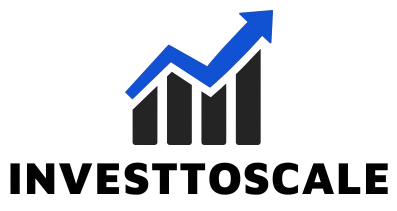If you’re a savvy investor or business owner looking for tax-efficient ways to manage your assets, you’ve likely come across the concept of like-kind exchanges. These transactions, also known as
1031 reverse exchanges, offer a powerful strategy for deferring capital gains taxes and optimizing your investment portfolio. In this guide, we’ll dive deep into the world of like-kind exchanges, exploring their benefits, requirements, and potential pitfalls.
Introduction to Like-Kind Exchange
At its core, a like-kind exchange allows taxpayers to swap one investment property for another without triggering immediate tax liabilities on the capital gains. This provision, outlined in Section 1031 of the Internal Revenue Code, has been a cornerstone of tax planning for decades. By deferring taxes, investors can preserve their capital and reinvest it into new opportunities, fostering economic growth and wealth creation.
Understanding the Basics
To qualify for a like-kind exchange, the properties involved must meet certain criteria. Generally, both the relinquished property (the one being sold) and the replacement property (the one being acquired) must be held for investment or business use. Additionally, the properties must be of like-kind, though this term is broadly interpreted to include a wide range of real estate and certain types of personal property.
Benefits of Like-Kind Exchanges
The primary benefit of a like-kind exchange is the ability to defer capital gains taxes indefinitely, allowing investors to leverage their capital more effectively. This tax deferral can result in substantial savings over time, especially for high-net-worth individuals and businesses with large investment portfolios. Furthermore, like-kind exchanges offer opportunities for portfolio diversification and strategic asset allocation, enabling investors to adjust their holdings to align with changing market conditions.
Key Requirements and Rules
Like-kind exchanges are subject to strict rules and timelines set forth by the IRS. One of the most critical requirements is the identification of replacement property within 45 days of the sale of the relinquished property. Additionally, the exchange must be completed within 180 days of the sale, including any extensions granted by the IRS. Failure to meet these deadlines can result in disqualification of the exchange and immediate tax liability.
Real-life Examples
To illustrate the benefits and challenges of like-kind exchanges, let’s consider a few hypothetical scenarios. Imagine a real estate investor who sells a rental property and reinvests the proceeds into a larger multifamily complex through a like-kind exchange. By deferring taxes on the sale, the investor can allocate more capital towards the new property, potentially increasing cash flow and long-term returns.
Impact of Tax Code Changes
Recent changes in tax legislation have sparked debate over the future of like-kind exchanges. While the Tax Cuts and Jobs Act of 2017 preserved the 1031 exchange provision for real estate transactions, it eliminated the use of like-kind exchanges for personal property assets. This shift has prompted investors to reassess their tax strategies and explore alternative approaches to asset management.
Comparison with Other Tax Strategies
When evaluating tax planning options, investors often compare like-kind exchanges with traditional sales and other tax-deferred strategies. Unlike a standard sale, which triggers immediate tax liabilities, a like-kind exchange allows investors to defer taxes and reinvest the full proceeds into new assets. Additionally, compared to Section 1031 exchanges, like-kind exchanges offer greater flexibility and broader eligibility criteria.
Tips for Maximizing Benefits
To make the most of a like-kind exchange, it’s essential to work with experienced tax professionals and qualified intermediaries. These experts can provide guidance on compliance requirements, help identify suitable replacement properties, and ensure proper documentation throughout the exchange process. By following best practices and staying informed about changes in tax laws, investors can maximize the benefits of like-kind exchanges while minimizing risks.
Potential Risks and Drawbacks
While like-kind exchanges offer significant tax advantages, they also come with potential risks and drawbacks. Market volatility, regulatory changes, and legal uncertainties can all impact the success of an exchange. Additionally, the complexity of the exchange process and the involvement of multiple parties, including qualified intermediaries and escrow agents, can add layers of complexity and administrative burden.
Future Outlook
Looking ahead, the future of like-kind exchanges remains uncertain amidst ongoing debates over tax policy and economic priorities. While some lawmakers advocate for preserving and expanding the use of like-kind exchanges to stimulate investment and economic growth, others argue for reforms to close perceived loopholes and generate additional tax revenue. Regardless of future changes, like-kind exchanges are likely to remain a valuable tool for tax-efficient asset management.
Case Study: Real Estate Exchanges
To illustrate the practical application of like-kind exchanges, let’s examine a real-world example. Suppose a real estate developer owns a portfolio of commercial properties and decides to streamline their holdings by exchanging several smaller properties for a larger mixed-use development. Through a like-kind exchange, the developer can defer taxes on the sale of the relinquished properties and reinvest the proceeds into the new development, potentially enhancing long-term returns and portfolio value.
In conclusion, like-kind exchanges offer a compelling strategy for tax-efficient asset swaps and portfolio optimization. By
deferring capital gains taxes and leveraging the flexibility of the exchange process, investors can maximize their returns and preserve their wealth over time. However, like any tax planning strategy, like-kind exchanges require careful planning, compliance with regulations, and ongoing monitoring to ensure success.

